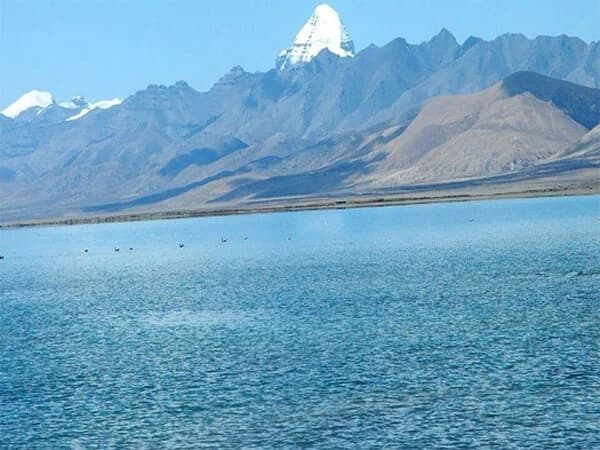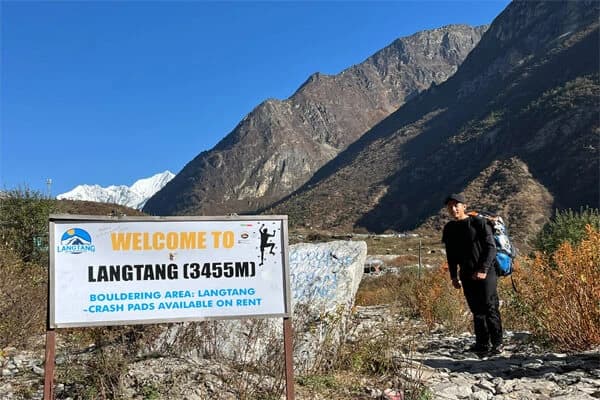The best time for Kailash Mansarovar Tour is one of the most important factors while making travel plans for tibet. Mount Kailash and Lake Mansarovar are located in a very high and isolated region of the Himalayas. These are sacred to Buddhists, Jains, Bonsavarians, and Hindus and are visited on this tour. Selecting the appropriate time is important due to the high altitude, unpredictable weather, and restricted access. Visiting during the favorable season can make your journey safer, more pleasant, and more memorable.
The Kailash Parikrama, or walk around the mountain, ascends to 5,600 meters, while Mount Kailash itself is almost 6,600 meters high. The weather can be severe, particularly during the winter when the trail is hazardous and passage is nearly impossible due to snow and freezing winds. The tour only runs during specific months as a result.
Because of the consistent weather, May through mid-October is the ideal time to visit. The mountain passes are open, the temperature is moderate, and the skies are typically clear during this time. Pilgrims from all over the world come to complete the Kailash Kora (circuit) and take a sacred plunge in Lake Mansarovar during these months.
Better weather, safer walking routes, more dependable transit, and less health hazards from the cold and altitude are all benefits of traveling at the proper time. In addition, these months offer breathtaking vistas of the mountains.
Therefore, scheduling your Kailash Mansarovar journey during the ideal season guarantees that you will have the greatest possible spiritual, cultural, and environmental experience. Selecting the appropriate season is the first wise move in any journey, regardless of whether you are traveling for adventure or religious reasons.
What is the Best Kailash Mansarovar Tour Overview?
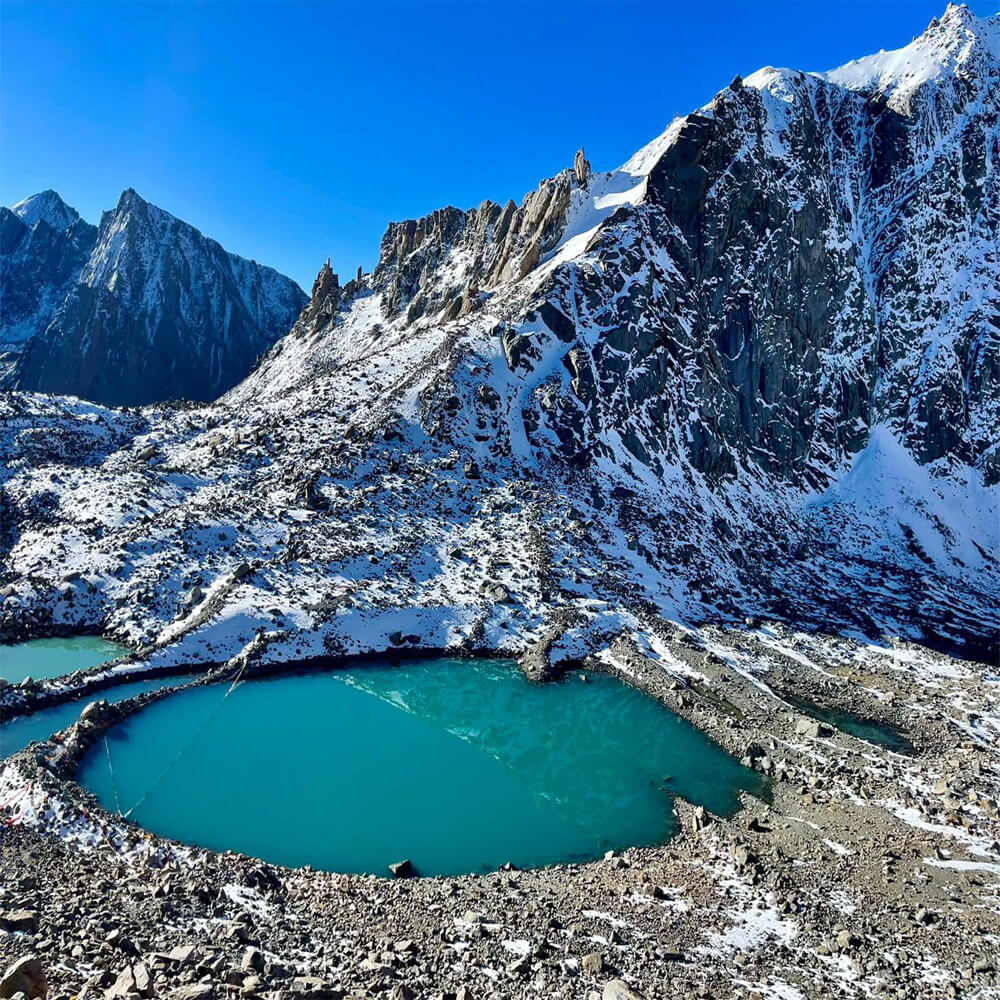
One of the Himalayas' most picturesque and spiritual tours is the Kailash Mansarovar Tour. Many religions, including Buddhism, Bon, Jains, and Hinduism, hold Mount Kailash and Lake Mansarovar, which are located close to the Nepal border in the far west of Tibet, in high regard. People travel here from all over the world to experience tranquility, purify their souls, and admire the pristine beauty of this isolated area.
Where Is Kailash Mansarovar located?
Mount Kailash (6,638 meters) and Lake Mansarovar (4,590 meters) are located in Tibet's Ngari area, near the borders of India and Nepal. The region is quite isolated and encircled by arid, striking mountains. Only with appropriate planning and permits is it possible to visit due to its high altitude and remote location from major cities.
Why Is Mount Kailash Mansarovar Important?
Mount Kailash has been revered as a sacred mountain for thousands of years. According to Hindu tradition, Lord Shiva resides there. It is regarded by Buddhists as a hallowed location associated with the strong deity Demchok. It is said that circumnavigating the mountain, also known as the Kailash Kora or Parikrama, will cleanse one's sins and bestow spiritual rewards.
Located immediately south of Kailash, Lake Mansarovar is equally revered. Spiritual healing is claimed to occur when one bathes in its cool water or simply just looks at it. The lake is huge, crystal pure, and breathtakingly gorgeous.
What tour Route Options is available for Kailash Mansarovar Tour?
The Kailash Mansarovar Tour can be taken in two primary ways:
Mount Kailash Tour Through Nepal
Begin in Kathmandu. Reach the Nepal-Tibet border via road or helicopter. Proceed to Kailash and Mansarovar after entering Tibet. For passengers from abroad, this is the most popular and adaptable route.
Mount Kailash Tour Through China's Tibet
Travel by land to Kailash from Lhasa. Tibet requires a travel permit and a Chinese visa. A longer trip, but one that is filled with breathtaking drives across the Tibetan plateau.
What is the Kaliash Mansarovar tour duration?
Depending on the route, the weather, and the number of days needed for acclimatization, the Kailash Mansarovar Tour often lasts 10 to 15 days. The Kailash Kora trek around Mount Kailash, which is roughly 52 kilometers long and takes three days to finish, is typically included on tours for two to three days.
Best time(Season) to Visit to Mount Kailash Mansarovar
Selecting the ideal time is crucial if you intend to travel the holy route to Mount Kailash and Lake Mansarovar. The greatest time to visit is when the skies are clear, the trails are open, and the experience is both gorgeous and safe because the weather in this high-altitude area can be rather harsh. May to mid-October is the ideal time of year for the majority of pilgrims and tourists to visit Kailash Mansarovar. Let's examine why this voyage is best suited for these months.
May: The Beginning of the Season
The Kailash Mansarovar trip season begins in May. The weather starts to get better after months of snow and cold. As the afternoon temperatures rise, several tour providers reopen their operations. Although snow may still be present on the higher paths, the mountain passes are gradually becoming more reachable.
May is a fantastic month if you like peaceful scenery and less crowds. Beautiful views of Mount Kailash and Lake Mansarovar are made possible by the bright skies and moderate temperatures. But because the season is only getting started, it could still seem cold in some places, especially at night.
June: Ideal Weather and Spiritual Energy
One of the greatest times to go is in June. With extended sunny days and pleasant walking temps, the weather stabilizes. Many pilgrims start their trek during this month, when the natural beauty is at its best.
The views of the mountains are clear, the pathways are dry, and the air is clean. You might come across more groups during this month because It is a popular time for adventure trekkers and spiritual seekers. If you want a smooth and enjoyable trip, June is an ideal time to attend.
July and August: Sacred and Busy
The peak months for the Kailash Mansarovar Yatra are July and August. Although it is monsoon season in Nepal, the area surrounding Kailash receives little rainfall because it is located in a rain shadow. Even though there may be occasional cloud cover, the trip is still feasible.
In the calendars of Buddhism and Hinduism, these months are crucial. Kailash is a very spiritual time of year since so many Indian pilgrims visit it around Guru Purnima and other holy occasions. This is the moment if you want to feel the energy of big crowds chanting, praying, and carrying out rituals. It is best to make reservations in advance because lodging and transportation may be more congested.
September: Clear Skies and Less Crowd
Another great month is September. The weather is still pleasant and the crowds start to drop out after the hectic summer. The air feels crisp and new, and the sky clear up once more. It is the ideal time of year for photography, leisurely strolls, and introspection by the lake or at the base of Mount Kailash. September is a serene and fruitful time of year to travel because the trails are still open and the weather is pleasant.
October: The Season Winds Down
The final month of the trekking season is October. The mountain air gets sharper and the temperatures begin to decrease, particularly at night. But the sky are frequently exceedingly clear, and the sun's rays give the arid mountain scenery a golden sheen.
For tourists who appreciate tranquility and are able to tolerate some cold, this is a fantastic time of year. But be careful towards the end of the month. Snow may start to fall at higher altitudes, and some parts of the trail might begin to close. It is best to complete your journey by mid-October.
Climate and Weather Factors for the Kailash Mansarovar Tour
The environment and weather surrounding Lake Mansarovar and Mount Kailash have a significant impact on your trip. The climate can be harsh because the area is located in a remote area of Tibet and at a very high elevation. You may pick the ideal time and get ready for this spiritual journey to Mount Kailash by being aware of the weather.
High Altitude and Thin Air
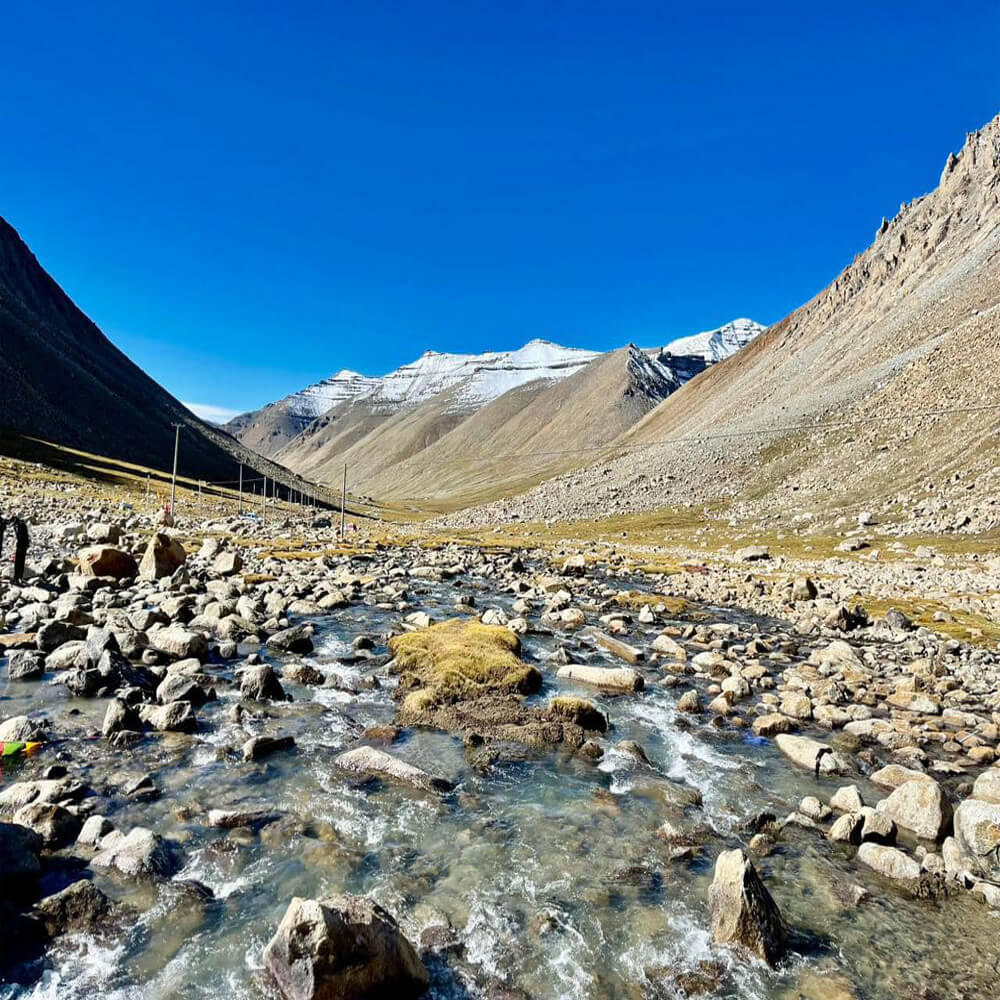
Mansarovar Lake is situated at about 4,590 meters above sea level, whereas Mount Kailash is 6,638 meters high. You will still spend several days walking above 4,500 meters even if the majority of the Kailash trek is completed at rather lower elevations.
In addition, the air feels colder than it is. You could feel chilly even in the summer, particularly at night or when taking early morning walks. For this reason, It is crucial to walk slowly, drink lots of water, and give yourself enough time to get used to the altitude.
Temperature Variations
In the Kailash region, the temperature fluctuates rapidly. Summer temperatures, which range from 10°C to 20°C, might seem warm in the sun during the day from May to September. But at night, particularly in May and October, the temperature can fall below freezing.
Near the mountain passes, it frequently gets very windy and is cold in the mornings and evenings. You may encounter a variety of weather conditions in a single day on the Kailash Parikrama or Kailash Kora hiking, which is the three-day trek around the mountain. These conditions include sunshine, wind, chilly air, and snow in some months. The best method to deal with these fluctuating temperatures is to wear layers. It is crucial to bring a hat, gloves, a windproof jacket, and a hat.
Wind and Dry Air During the Tibet Tour
The wind is one of the most frequent weather problems in the area. It gets incredibly windy near Mount Kailash because of the open terrain, especially in the afternoons. In addition to making walking more challenging, the strong wind can make it feel considerably colder than it actually is. Also, the air is extremely dry. Because of the low humidity, your skin and lips could get dry or cracked. Keeping hydrated and carrying lip balm and moisturizer will help you stay comfortable on the trek.
Snowfall and Weather Risks which you are in Kailash Tour
The road is nearly impossible to access between November and April due to severe snowfall and frigid weather. There is a significant chance of frostbite or altitude-related illnesses, and snow frequently blocks the mountain routes and pedestrian paths. Tours are only planned from late spring to early fall because of this.
Snowfall can still happen in higher areas during the trekking season, particularly in early May or late October. Thus, It is critical to heed the guidance of your guide and to constantly be ready for unforeseen weather conditions.
At Kailash Mansarovar, the weather is harsh and unpredictable. However, you can safely enjoy this holy trek if you schedule your trip between May and September, keep an eye on the weather, and bring the appropriate equipment. The Kailash experience is both difficult and incredibly fulfilling because of the chilly air, high elevation, and strong winds.
Choosing the Right Time Based on Your Preferences
The type of experience you are seeking will determine the ideal time to visit Kailash Mansarovar. While some may like to join a large group of pilgrims, others may prefer to travel when the weather is ideal. Some tourists would rather travel in peace and with fewer people. Here are some ideas for planning your trip so you can select the season that best suits your requirements.
If You Want Clear Weather and Beautiful Views
The finest months to visit Mount Kailash and Lake Mansarovar are June and September if taking in their natural splendor is your primary objective. Clear skies, steady weather, and less wind on the trails are typical throughout these months.
The mountains are beautiful in the sunlight, and the snow has already disappeared. It is a unique experience to witness Mount Kailash's complete reflection in the serene waters of Mansarovar Lake.
The three-day Kailash Parikrama (Kailash Kora trek) is also easier to finish during these months. You have a better chance of completing the walk safely if there are fewer weather-related issues. Nature lovers and photographers will adore this time of year.
If You Want to Join a Spiritual Pilgrimage wich month is the best?
July and August are when many religious pilgrims from Nepal, India, and other countries schedule their trips. The primary Yatra season is during these months. Even though regions of India and Nepal experience monsoon, the Kailash region receives very little rain since it is in a rain shadow.
This is the ideal moment to experience the place's spiritual energy alongside a large number of other pilgrims. Prayers, chants, and dedication fill the air during this time of year. Additionally, you may come across Tibetan pilgrims who are following the kora (circuit) in customary ways, such as bowing down at every turn.
If You Prefer Peace and Fewer People
When It is less crowded, some individuals like to travel. Select May or early October for a more tranquil experience. The trekking season is just getting started in May. There will be fewer groups and quieter paths, although the temperature is still a touch chilly. The lake begins to thaw, and the sceneries seem new after winter.
The Kailash Tour season concludes in October. The temperature drops during this month, so fewer people come, but the sights are still stunning and the skies are still clear. If you want to have a profound connection with nature and your own ideas while traveling, now is an excellent time.
When Not to Visit Kailash Mansarovar
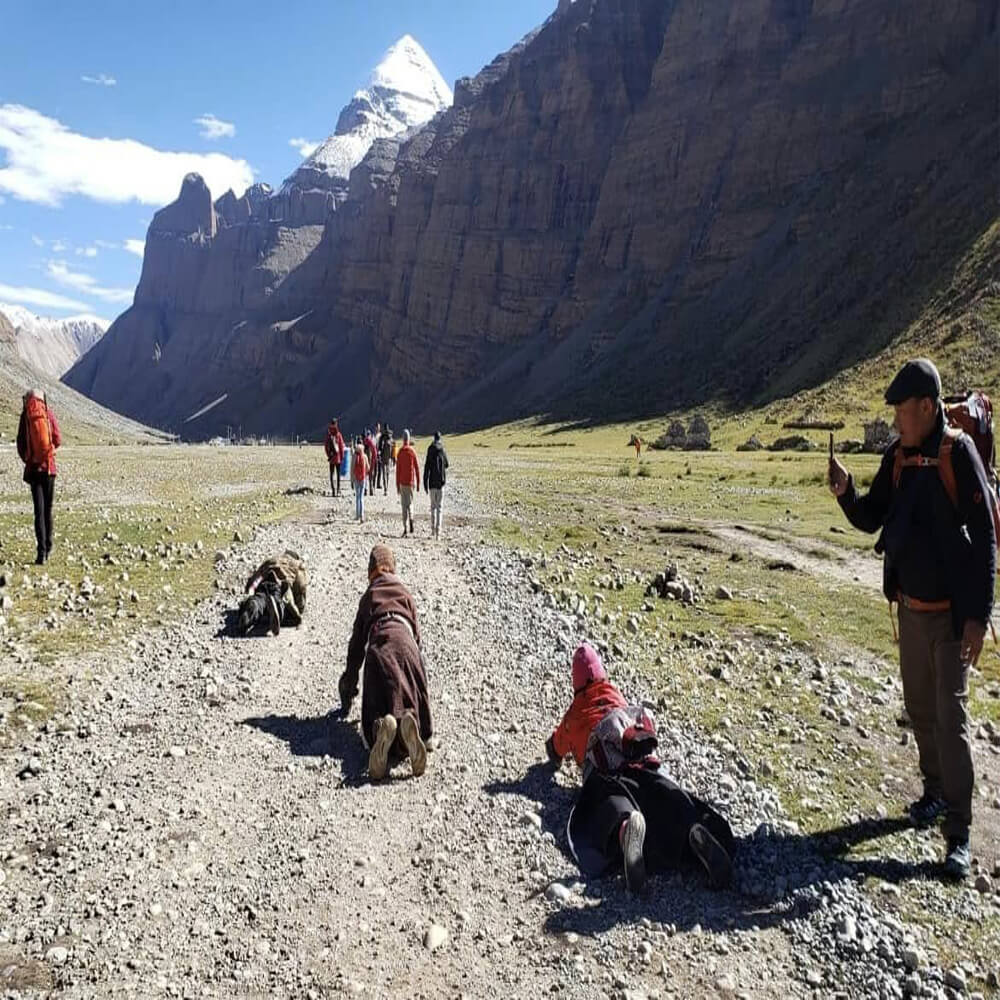
November through April is the worst time of year to visit Kailash Mansarovar. The high mountain passes are hazardous or inaccessible during these months due to the region's extreme cold, intense snowfall, and severe winds. Particularly at night, temperatures can fall well below freezing, raising the possibility of frostbite and altitude sickness. Because of safety concerns, the majority of tour providers do not offer trips during the winter.
Weather-related interruptions may also cause roads and aircraft routes to close. Waiting until the warmer months, from May to mid-October, when conditions are more favorable, is the greatest option for a pilgrimage that is both safe and comfortable.
Why Winter Is Not Suitable for the Kailash Mansarovar Tour
Because of its profound spiritual significance and stunning, high Himalayan scenery, many tourists aspire to see Mount Kailash and Lake Mansarovar. However, not all seasons are suitable for this trip. The area gets quite cold and snowy from November to April, making it dangerous to trek or travel.
Particularly in the upper passes surrounding Mount Kailash, the temperature falls below freezing during these months. It can get as cold as -20°C at night, and breathing becomes much more difficult due to the thin air. Due to hazardous conditions, the majority of the paths used throughout the excursion are either completely closed or heavily snowed over. As a result, practically every travel agency stops planning trips during the winter.
Closed Roads and Border Restrictions
Since Kailash Mansarovar is situated close to the borders of Nepal and India and in a remote area of Tibet (China), winter weather also has an impact on roads and border access. From Simikot, Hilsa, or Lhasa, the roads get slick and dangerous. During the off-season, the Chinese border authorities also frequently restrict or deny entry to foreign pilgrims and tourists.
Strong winds, cloud cover, and poor visibility frequently force the cancellation of even helicopter flights from Nepal to the border areas. This implies that you might not be able to make it to the trek's beginning location, even if you are well-prepared.
Health Risks in Cold and High Altitude
Since the well-known Dolma La Pass rises to a height of nearly 5,600 meters, trekking to Kailash Mansarovar already requires high heights. The body already has trouble getting adequate oxygen at such heights. The chance of becoming ill increases significantly when combined with frigid weather.
Even minor ailments like a cold or cough might worsen over the winter. The risks of frostbite, hypothermia, and altitude sickness are quite high. There are no large hospitals in the region, and bad weather could cause delays in rescue efforts.
Because of this, individuals of all ages are discouraged from doing the Kailash journey in the winter, particularly those with heart issues, respiratory disorders, or weakened immune systems.
Why Tours Are Not Operated in Winter
From November to April, almost all respectable travel agencies including regional operators in Tibet and Nepal do not provide tours to Kailash Mansarovar. Making sure your travel is pleasant, comfortable, and meaningful is just as important as staying safe. They will advise you to wait until May, when the snow starts to melt, the sky clear, and the route reopens, even if you want to go alone or in a small group.
Wait for the Right Season
When organizing your trip to Kailash Mansarovar, It is best to exercise patience. Attempting to travel during the off-season may result in partial tours, health problems, or cancellations. Rather, schedule your vacation for May through October, when you can fully experience the area's spiritual vitality and natural beauty without risk or regret.
Final Tips for Planning Your Kailash Mansarovar Tour
Selecting the Best season for Kailash Mansarovar tour is only one aspect of planning a trip; another is getting ready thoroughly to ensure a seamless, secure, and spiritually rewarding experience. Before you go, bear the following points in mind.
Plan Ahead to Prevent Stress at the Last Minute
Demand is particularly high in June, July, and August, and the Kailash Mansarovar region is only open for a few months each year. Reservations for flights, permits, and lodging fill up fast. Booking your tour at least two to three months in advance will ensure that you obtain the dates and route of your choice. Early-bird packages that include flights, permits, and all trip arrangements are available from our tour operator, Nepal Trekking Routes.
Choose a Trusted Local Operator
It is crucial to make reservations through a certified and knowledgeable tour operator because this is a high-altitude pilgrimage that requires multiple permissions. Nepal Trekking Routes has years of experience planning both overland and helicopter excursions of Kailash via the Nepal route. We make the trip safe and spiritual, assist with permit management, and walk you through every step.
Prepare Physically and Mentally
You will be walking at great elevations, occasionally above 5,000 meters, despite the trek's lack of technical difficulty. Try going on short treks or strolls with a backpack a few weeks prior to your vacation. Drink plenty of water and engage in deep breathing exercises. Mental toughness is also helpful; maintain your composure and optimism throughout the trip.
Don’t Forget Insurance and Medical Checks
Get a basic health checkup before you go, and confirm that high-altitude trekking is covered by your travel insurance. Keep cold, altitude, and digestive medications on hand. To ensure you're prepared, we offer practical packing lists and advice. Your trip to Kailash Mansarovar will be a truly positive one if you plan ahead and are prepared.
Some of Frequently Asked Question
What is the best time to visit Kailash Mansarovar?
Since the weather is clearer, the paths are dry, and the mountain passes are open, May through mid-October is the ideal time of year to explore Kailash Mansarovar. Additionally, this is the most pleasant and safest time to travel.
Can I visit Kailash Mansarovar during the winter months?
No, the Kailash Mansarovar excursion is not advised from November to April. Travel is hazardous due to heavy snow and freezing temperatures, and most routes are closed during this period.
Which month is best for both good weather and fewer crowds?
If you prefer nice weather and fewer pilgrims, May and September are the best months. The experience is more picturesque and intimate during these months because of the clear views and serene pathways.
Are July and August suitable months to visit?
Yes, particularly for those who are spiritually inclined. Since Mount Kailash is located in a rain shadow, it stays largely dry during Nepal's monsoon season. Festivals and group pilgrimages are common throughout these months.
How is the Kailash Parikrama impacted by the weather?
The weather is a major factor. The Parikrama, a three-day walk around Mount Kailash, can become extremely challenging or even dangerous if It is too cold, wet, or snowy. For this reason, choose the appropriate season is crucial for both comfort and safety.
Do I need a visa for the Kailash Mansarovar Tour?
Yes. You require a Tibet travel permit and a Chinese group visa because Mount Kailash and Lake Mansarovar are located in Tibet (China). These cannot be applied for by you alone. Both documentation will be arranged for you by a licensed travel operator. You may easily obtain a Nepal tourist visa at the airport if you're entering through Nepal.
How do I reach Mount Kailash and when are routes open?
The most popular route is via Nepal, particularly from Kathmandu to Tibet, where one can travel by foot or by helicopter to Simikot before continuing on land to Kailash. Depending on the conditions and border authorizations, these routes are often open from May to October. Due to snow and freezing conditions, road access to Tibet and flights to Simikot are halted throughout the winter.
Conclusion: Best Time for Kailash Mansarovar Tour
For a safe and fulfilling trip, choosing the ideal time for the Kailash Mansarovar Tour is important. May to mid-October are the best months because of the clear weather, wide mountain passes, and more comfortable trekking conditions.
Group yatras for spiritual travelers are most common from June to August, while May and September provide better visibility and less crowds. Winter travel should be avoided because of the snow and bitter cold.
You can better appreciate Mount Kailash and Lake Mansarovar's natural beauty, religious environment, and spiritual energy by making advance plans and keeping the appropriate season in mind. A well-planned trip to this isolated, high Himalayan area offers tranquility as well as lifelong memories.






